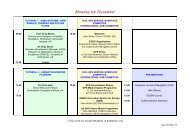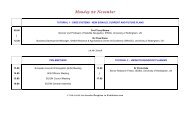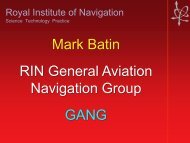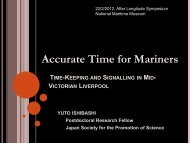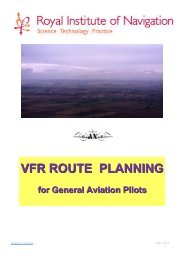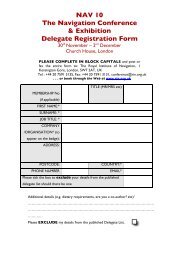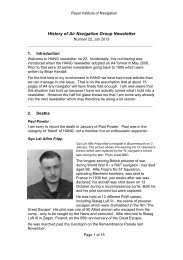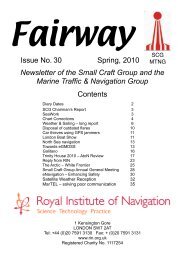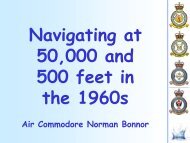HANG Newsletter - Royal Institute of Navigation
HANG Newsletter - Royal Institute of Navigation
HANG Newsletter - Royal Institute of Navigation
You also want an ePaper? Increase the reach of your titles
YUMPU automatically turns print PDFs into web optimized ePapers that Google loves.
<strong>Royal</strong> <strong>Institute</strong> <strong>of</strong> <strong>Navigation</strong><br />
accuracy to be used as an aiming reference without the need to use a<br />
bombsight or other external reference.<br />
Gee installation in a Lancaster bomber mock-up. Photo credit jproc.ca.<br />
Dippy later went to the United States where he worked on the development <strong>of</strong><br />
the LORAN system, a system that was similar to Gee but using a longer<br />
wavelength. LORAN was used by the US Navy and <strong>Royal</strong> Navy during World<br />
War II, and after the war came into common civilian use worldwide for coastal<br />
navigation, until GPS made it obsolete.<br />
Gee was also known as AMES Type 7000, for "Air Ministry Experimental<br />
Station". AMES was a common universal naming system in the UK, similar to<br />
the "AN" series in the US.<br />
Walter said…<br />
Images 1 and 2. Photo credit Walter Blanchard.<br />
“I have in my possession a well-used folder <strong>of</strong> miniature GEE charts - see<br />
image 1 - salvaged from a rubbish bin at Shawbury in 1957. It contains a set<br />
<strong>of</strong> 41 small lattice charts covering the UK GEE chains. An example is at<br />
image 2.<br />
Page 3 <strong>of</strong> 16




